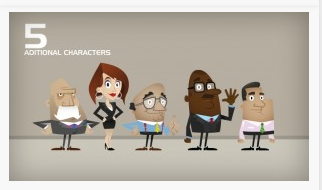How I Got Investors To Notice Our Startup
This is a guest post by Yaniv Nizan who is the CEO and Co-Founder of The SOOMLA Project, the platform for Creating In-App Purchase Stores for Mobile Games. Yaniv’s is also a writer with articles featured in blogs such as: Gamasutra, Codenameone UX Motel and blog.soom.la and a speaker in different industry events. You can follow yaniv at @y_nizan.
When I started The SOOMLA Project less than a year ago I thought raising money will be a piece of cake. My previous startup is relatively successful and as a strong team targeting the rapidly growing market of mobile apps with a fresh product that fits the market like a glove it should be easy right? Well, my 2 co-founders and I soon discovered that raising money is never easy and especially these days where there are so many startups out there and it seems like no talented engineer wants to be an employee anymore.
Following advice from Dave Mcclure, Naval Ravikant and others I realized that the only way to get our promising startup noticed and be fundable is to have traction. How much traction? The opinions vary between 1 million users to 10 million users and as a B2B2C company that means end users.
Eventually we did get to 1 million end users and 2 months after we closed our seed round. I must admit that there was a drastic change in the responses we received when we had the numbers to back up our story. I’m not saying it was easy. It never is. However, there was suddenly interest to hear our story and investors had time to meet me the next day.
Ok, well, getting to millions of users is not a piece of cake either. If you have the marketing dollars then maybe but this is a yet to be funded startup we are talking about. How did we do it?
I guess one thing is to have a product that your customers really love. If you don’t have that it’s almost impossible to get so many users to use your product which is probably one of the reasons why investors insist on this validation in the first place. Assuming you do have a product-market fit, how do you get the word out with no marketing dollars?
We used a combination of Open Code Samples, Content Marketing and Tools that can produce a nearly professional outcome at a fraction of the price. I’ll give an example in each one of the categories.
Open Code Samples
We opened 4 main open source projects on Github – https://github.com/soomla. I then started answering questions in forums such as Stack Overflow, Gamedev, Unity Forums and many others using code pieces from the open projects and linking back to them. Using this method, we were able to get very targeted audience to the code projects. These days, every third visit to our project pages turns into an SDK download.
Content Marketing
I identified a knowledge gap among mobile game developers about how to use the power of In-App Purchase and virtual economies in their games. Bringing my knowledge from online monetization, video advertising and e-commerce and extending it by interviewing leading game designers and reading about the subject I was able to create a massive amount of useful content about the subject and started sharing it through our Blog and Facebook Page. The result was a base of thousands of fans and established authority in the subject.
Cost Saving Tools
Among many other online tools, the one that saved us the most amount of money was Powtoon – Our intro video was less than $100 while others can cost $3,000 and even more. I tried to create a video that will be fun to watch and will convey the problem and product in a way that anyone can understand so it will be highly sharable. Making a’talking cartoon’ video was the way to go and Powtoon does exactly that. It’s not as good as using professional tools like After Effects and 3d illustrators but it’s about 50 times more affordable and it allowed us to get the point across. I found a voice artist was on Fiverr so it was about 20 times cheaper than a professional one and it was just as good.
Soomla intro explainer video made using Powtoon
Latest posts by Jordana Pepper (see all)
- The Most Creative Teacher Is… - October 22, 2015
- How To Make Marketing Videos People Will Really Love & Share! - April 28, 2015
- Digital Marketing in 2015 - March 15, 2015
- 5 Steps to Overcoming Stage Fright - March 2, 2015


